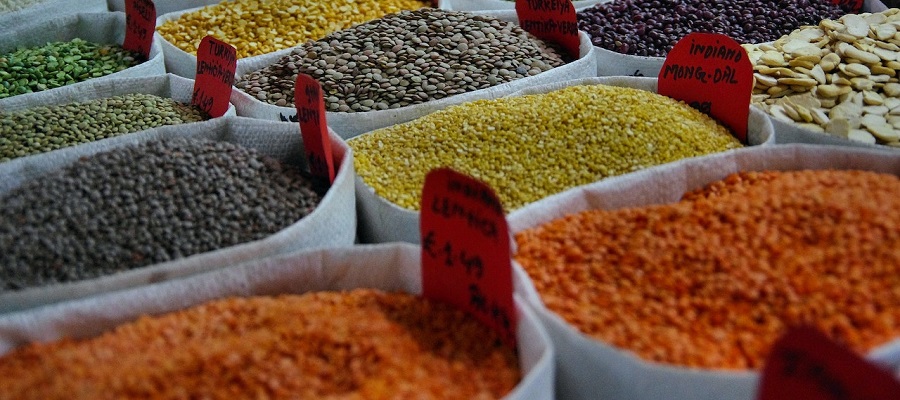Beans are a type of legume that are often used as a food ingredient in a variety of dishes. There are many different types of beans, including black beans, kidney beans, lentils, and chickpeas, which can vary in flavor, texture, and appearance.
Beans are a good source of nutrients, including protein, fiber, and a variety of vitamins and minerals. They are also low in fat and are a good source of antioxidants.
When selecting beans, it's a good idea to choose beans that are firm and have a smooth texture. It's also a good idea to store beans in a cool, dry place and to use them as soon as possible after purchase to ensure the best quality.
Beans can be prepared in a variety of ways, including boiling, baking, or frying. They can be added to a variety of dishes, including soups, stews, salads, and casseroles, to add flavor and nutrients.
It's important to handle beans safely to reduce the risk of foodborne illness. It's a good idea to wash beans thoroughly before using them and to cook them fully to reduce the risk of infection from harmful bacteria or parasites. It's also a good idea to soak beans before cooking to reduce the risk of gastrointestinal issues.
Does eating a lot of beans have any side effects?
Eating a lot of beans may have some potential side effects, depending on the individual and the specific type of beans consumed. Here are a few potential side effects that may occur when consuming large amounts of beans:
-
Gas and bloating: Beans are high in fiber, which can cause gas and bloating in some people. Soaking and rinsing beans before cooking them can help reduce the risk of gas and bloating.
-
Digestive issues: Beans contain substances called lectins and phytates, which can interfere with the absorption of certain nutrients and may cause digestive issues in some people. Soaking and cooking beans can help reduce the levels of lectins and phytates and may help reduce the risk of digestive issues.
-
Allergic reactions: Some people may be allergic to certain types of beans or to certain proteins found in beans. Symptoms of a bean allergy may include itching, hives, swelling, difficulty breathing, and anaphylaxis.
-
Interactions with medications: Beans may interact with certain medications, such as blood thinners, diabetes medications, and thyroid medications. It's a good idea to talk to a healthcare provider about the potential interactions of beans with any medications that an individual is taking.
In general, it's a good idea to consume beans in moderation and to choose a variety of beans to ensure that the diet is well-balanced. It's also a good idea to consider any individual dietary needs or restrictions and to talk to a healthcare provider if there are concerns about the potential side effects of consuming beans.
The most famous dishes prepared using beans
Beans are a versatile ingredient that can be used in a variety of dishes, including soups, stews, salads, and casseroles. Here are a few examples of dishes that are made with beans:
-
Chili: Chili is a hearty and flavorful stew made with a variety of beans, such as kidney beans, black beans, or pinto beans, and a variety of vegetables and spices.
-
Black bean soup: Black bean soup is a creamy or broth-based soup made with black beans, vegetables, and spices.
-
Refried beans: Refried beans are a traditional Mexican dish made by mashing cooked beans and then frying them in oil or lard.
-
Baked beans: Baked beans are a savory and sweet dish made with beans, such as navy beans or pinto beans, that are cooked with a variety of ingredients, such as onions, bacon, and a sweet sauce, and then baked until the flavors are well-combined.
-
Hummus: Hummus is a Middle Eastern dip or spread made with chickpeas, tahini, lemon juice, and spices.
-
Lentil soup: Lentil soup is a hearty and flavorful soup made with lentils, vegetables, and spices.
There are many other dishes that are made with beans, and the specific types of beans and the methods of preparation can vary widely depending on the recipe and the personal preferences of the cook.
Most countries use beans
Beans are a widely consumed food ingredient in many countries around the world. They are a staple food in many cultures and are often used as a source of protein, fiber, and other nutrients. Here are a few examples of countries where beans are a common food ingredient:
-
Latin America: Beans, such as black beans and pinto beans, are a staple food in many Latin American countries and are often used in dishes such as chili, refried beans, and bean soup.
-
Middle East: Chickpeas, also known as garbanzo beans, are a common food ingredient in many Middle Eastern countries and are often used to make dishes such as hummus and falafel.
-
India: Lentils are a common food ingredient in India and are used in a variety of dishes, including lentil soup and dal, a traditional Indian dish made with lentils and spices.
-
United States: Beans, such as kidney beans and navy beans, are a common food ingredient in the United States and are often used in dishes such as chili and baked beans.
-
Africa: Cowpeas, also known as black-eyed peas, are a common food ingredient in many African countries and are used in dishes such as cowpea stew and cowpea soup.
Beans are a widely consumed food ingredient in many other countries around the world, and the specific types of beans and the dishes that are made with them can vary depending on the local cuisine and cultural traditions.


